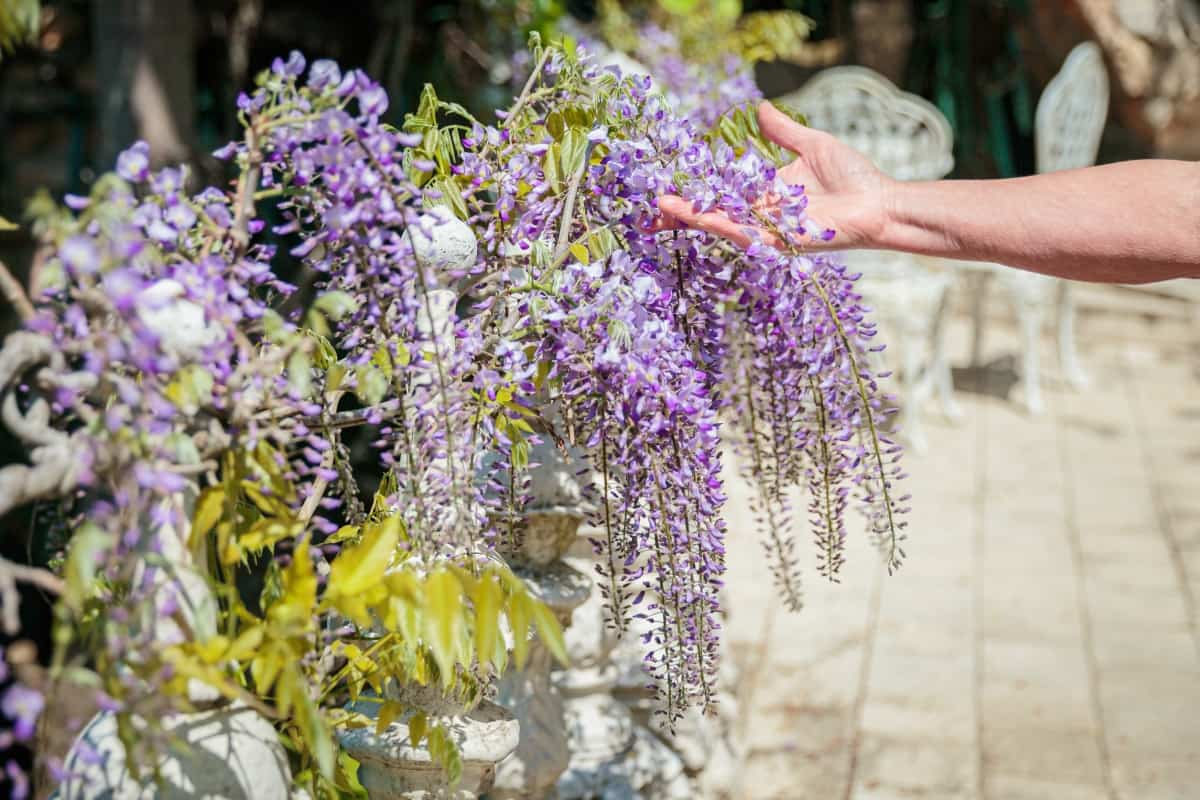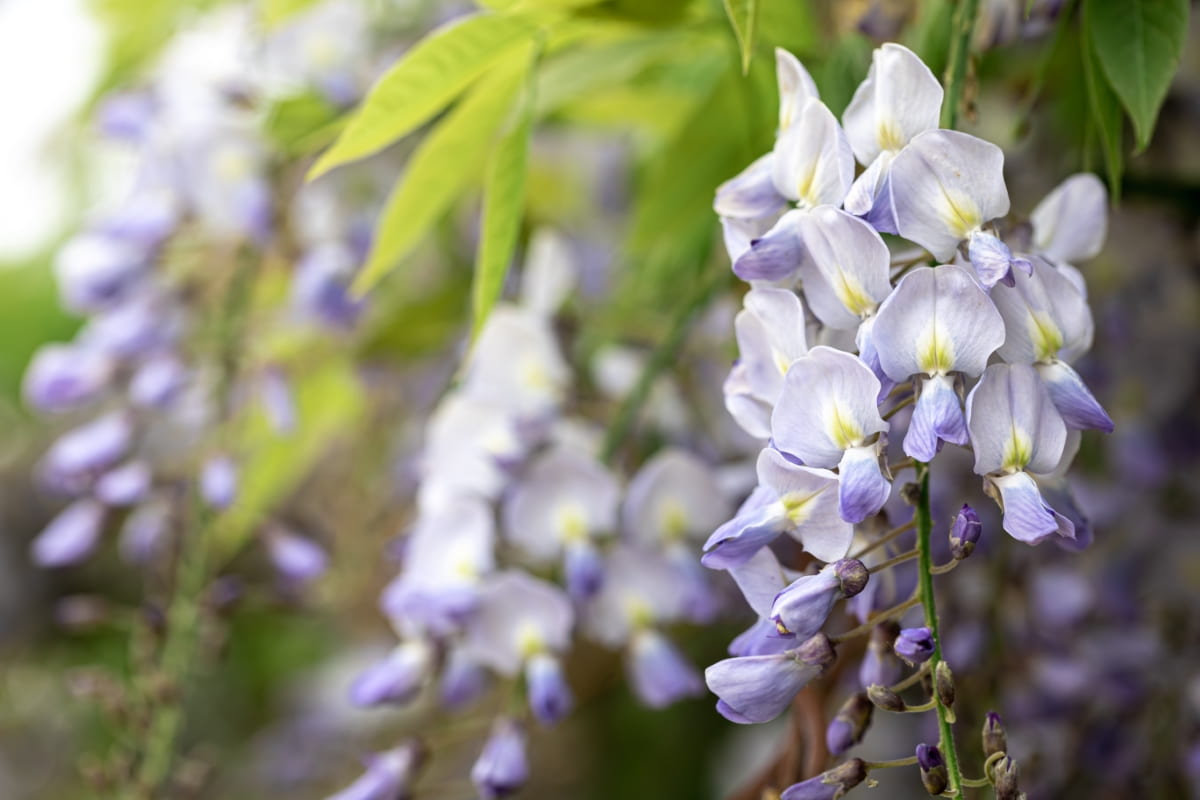Wisteria plants are known for their beautiful cascading clusters of flowers that adorn gardens and trellises. If your wisteria is not blooming as expected, do not worry. By ensuring it receives adequate sunlight, water, and nutrients and addressing any potential issues, such as pruning at the wrong time or lack of proper support, you can encourage your wisteria to bloom abundantly.

10 Reasons Why Is My Wisteria Not Blooming
Immaturity of the Plant
When it comes to wisteria plants not blooming, one common reason could be the immaturity of the plant. Younger plants may focus more on establishing their root system and foliage before putting energy into blooming. If your wisteria is still in its early stages, don’t worry too much if you haven’t seen any blooms yet. Give it time and proper care, allowing it to mature at its own pace.
Pruning Practices
Pruning practices play a crucial role in the blooming of your wisteria. When it comes to pruning, timing is everything. To encourage wisteria blossoms, it’s essential to prune at the right time of year. Typically, wisteria should be pruned twice a year: once in late winter and then again in mid-summer.
During the winter pruning session, focus on removing any overgrown branches to promote new growth. This will help maintain the plant’s shape and prevent it from becoming too unruly. In contrast, summer pruning is all about controlling the size of your wisteria by trimming back excessive growth.
Insufficient Sunlight
Wisterias are known to thrive in full sun conditions, so if yours isn’t getting enough light, it might be affecting its blooming ability. Ensure that your wisteria is planted in a spot where it receives 6 hours of direct sunlight each day. If nearby trees or structures are blocking the sun’s rays from reaching your plant, consider pruning them back to allow more light in. Remember that even though wisterias can tolerate some shade, they truly flourish when bathed in sunlight.
Nutrient Deficiency
If your wisteria lacks key nutrients such as nitrogen, phosphorus, or potassium, it may struggle to produce flowers. This deficiency can result from poor soil quality or inadequate fertilization practices. To troubleshoot wisteria bloom failure, consider using a balanced fertilizer specifically designed for flowering plants.
Additionally, mixing organic matter into the soil can help provide vital nutrients for your wisteria. How to get wisteria to bloom? Regularly monitoring the health of your plant and adjusting its feeding regimen accordingly can make a significant difference in promoting healthy growth and abundant blooms.
Improper Watering
Improper watering can be a common reason for wisteria not flowering as expected. Wisterias prefer moist, well-draining soil, so finding the right balance is key. Giving your plant excess water can cause root rot, while not providing enough water can cause stress and hinder its ability to produce flowers. To enhance wisteria flower development, check the soil moisture regularly. Make sure to water deeply, but allow excess water to drain away.
In case you missed it: 10 Reasons Why Your Iris is Not Blooming: Remedies and Treatment

Temperature Extremes
Living in extreme temperatures can take a toll on your wisteria plant. When it’s too hot, the buds may dry out before they even have a chance to bloom. Similarly, during harsh winters, the cold can damage the delicate flower buds, leading to a lack of blooms come springtime. To overcome barriers to wisteria flowering, consider providing some shelter for your plant during particularly hot or cold spells.
This could involve moving potted wisteria indoors during heatwaves or covering outdoor plants with frost cloth in winter. When it comes to maximizing wisteria flower yield, ensuring that your wisteria is planted in well-draining soil it can also protect the roots from getting too hot or too cold.
Over-Pruning
Over-pruning your wisteria can actually hinder its ability to bloom. While it’s important to prune wisteria regularly, doing it too aggressively can remove the flower buds along with the excess growth. When you cut back your wisteria too much, you might be inadvertently limiting its blooming potential for the upcoming season. How to encourage wisteria to flower? Instead of going overboard with your pruning shears, allow the plant to develop and mature naturally. By striking a balance between pruning and letting it grow, you’ll likely see an increase in blooms over time.
Pest Infestation
A pest infestation can be a real buzzkill when it comes to your wisteria not blooming. Those sneaky critters can wreak havoc on your plant without you even realizing it. From aphids to spider mites, these tiny intruders can suck the life out of your wisteria and leave it looking sad and wilted. When it comes to addressing wisteria blooming challenges, keep an eye out for any signs of pest activity on your plant, such as yellowing leaves, sticky residue, or visible bugs crawling around. If you spot any unwanted visitors, take action immediately to prevent further damage.
Disease
Diseases can be a major factor in why your Wisteria does not produce flowers as expected. Powdery mildew appears as a white powdery content, affecting the plant’s ability to photosynthesize effectively. Root rot causes weakened roots and poor nutrient absorption. Leaf spot disrupts the plant’s overall health. To boost wisteria flowering performance, make sure to remove affected parts of the plant promptly and dispose of them properly.
In case you missed it: 10 Reasons Why Your Anthurium Plant is Not Blooming: Treatment and Remedies

Soil pH Imbalance
If you notice that your wisteria isn’t blooming as it should, it might be due to a soil pH imbalance. Wisterias prefer slightly acidic to neutral soil with a pH level between 6.0 and 7.0. An alkaline or acidic soil can prevent the plant from absorbing essential nutrients properly, leading to poor blooming performance. To determine your soil’s pH levels, you can use a simple testing kit available at most garden centers.
Suppose the test reveals that your soil is too alkaline or acidic for wisterias. In that case, you can amend it by adding organic matter to help adjust the pH levels gradually over time. How to make wisteria bloom? Regularly monitoring and maintaining the optimal pH balance in your soil will promote healthy growth and abundant blooms on your wisteria vine.
In case you missed it: 10 Reasons Why Your Agapanthus is Not Flowering: Remedies and Treatment

Conclusion
In the journey of nurturing a wisteria plant, encountering challenges like a lack of blooms can be discouraging. However, with proper care, you can address the underlying Wisteria blooming issues. By ensuring your plant is mature enough, practicing correct pruning techniques, providing adequate sunlight and nutrients, maintaining proper watering habits, safeguarding against temperature extremes and pests, as well as monitoring for diseases and soil pH balance – you can solve Wisteria flowering problems.
- Flower Garden Designs and Layouts for Beginners
- Planting and Spacing Techniques in Papaya: A Beginner’s Guide
- Growing Gold: Essential Techniques for Planting Pineapples
- How to Make Kalanchoe Plant Bushy: Home Remedies and Solutions
- 11 Reasons Why Your Gardenia is Not Blooming: Home Remedies and Solutions
- Eco Elegance: The Guide to Designing a Drought-Tolerant Landscape
- Gardening on a Slope: Strategies for Hillside Landscaping
- Nourish and Flourish: Top Organic Mulches for Thriving House Plants
- Everything You Want to Know about Indian Mogra Flower: Discover Uses and Growing